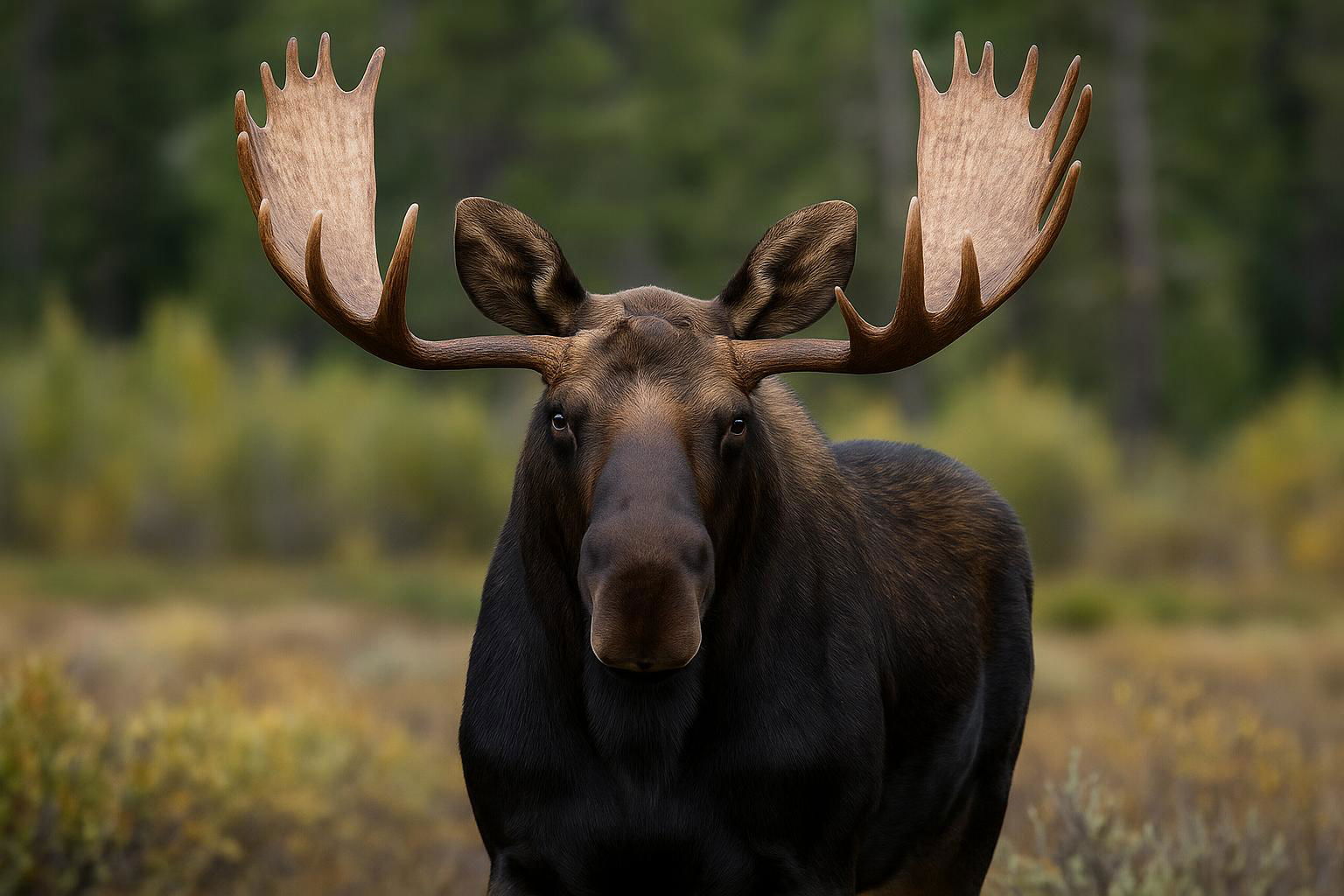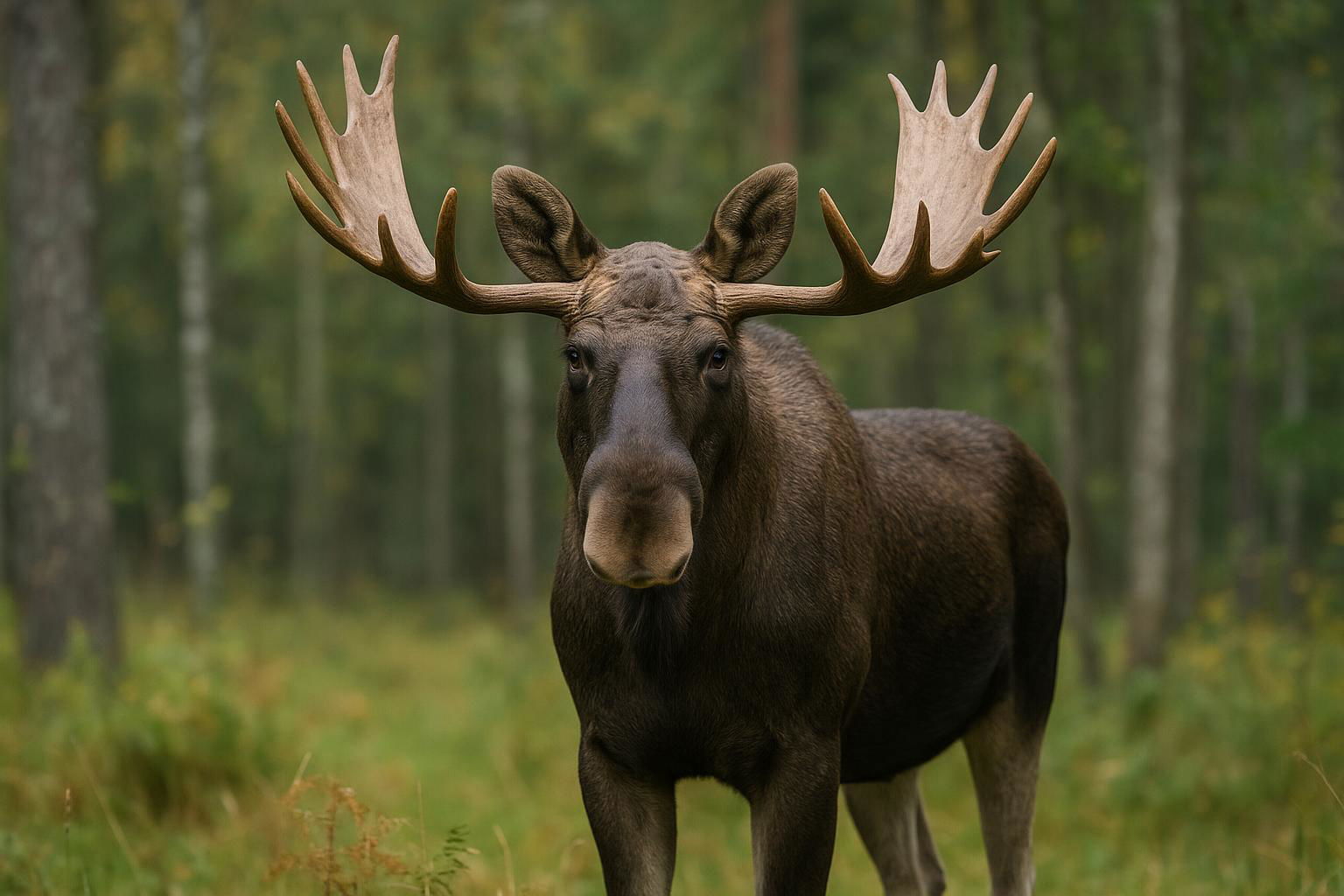
Moose
Alces alces
The moose, scientifically known as Alces alces, is the largest and heaviest species in the deer family. Native to the northern regions of North America, Europe, and Asia, these majestic creatures are easily recognizable by their towering stature, long legs, and distinctly broad, flat antlers, which are exclusive to males. Moose can stand up to 7 feet tall at the shoulder and weigh over 1,500 pounds. Their appearance is characterized by a long, bulbous nose, a pronounced dewlap or "bell" hanging below the throat, and a thick, dark brown to black coat that provides insulation against harsh cold climates.
Preferring habitats with a mix of boreal and mixed deciduous forests, moose are often found in areas abundant in water bodies such as lakes, rivers, and marshes, where they feed on aquatic vegetation, willows, and birch. Despite their size, they are excellent swimmers and can dive to reach submerged plants. Solitary by nature, moose are mostly active during dawn and dusk and are known for their remarkable ability to navigate through deep snow. During the autumn rutting season, males engage in fierce antler battles to compete for mates. Adapted to northern climates, moose are incredibly resilient but face challenges from habitat encroachment and climate change, requiring conservation efforts to ensure their survival.

 All Species & Breeds
All Species & Breeds
 Highland Cattle
Highland Cattle
 Miniature Donkeys
Miniature Donkeys
 All Species Directory
All Species Directory
 Highland Cattle in Virginia
Highland Cattle in Virginia
 Miniature Donkeys in Texas
Miniature Donkeys in Texas














